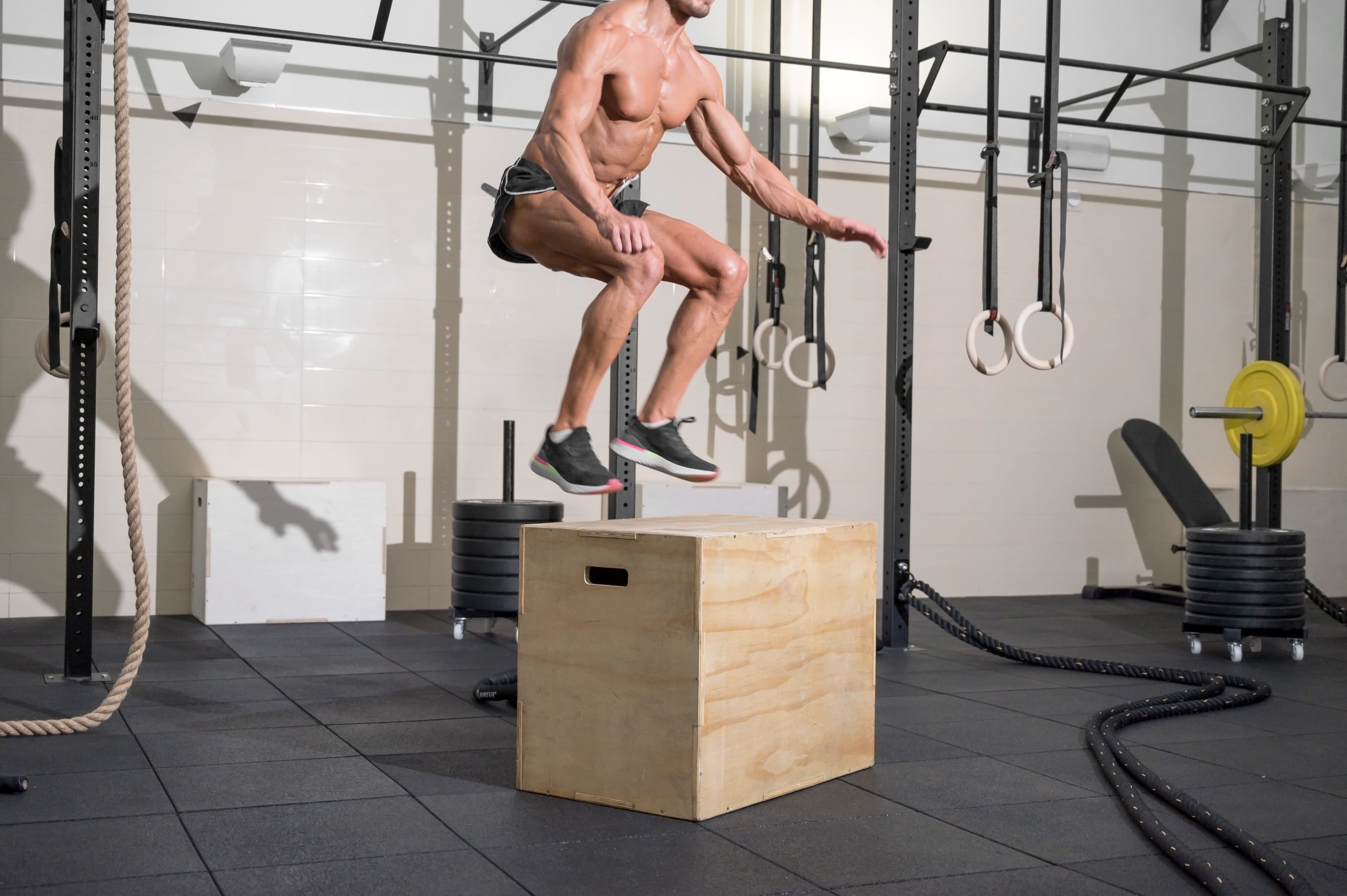What is Plyometric Training, and Who Should Do It?

MyFitnessCoach
December 23, 2024
Plyometric training, often referred to as "jump training" or "plyos," is a dynamic form of exercise that focuses on explosive movements. By combining strength and speed, plyometric exercises help improve power, agility, and overall athletic performance. This type of training is especially popular among athletes, but it can benefit anyone who wants to enhance their fitness levels.
If you're looking to boost your strength, burn calories, and improve coordination, plyometric training might be the perfect fit for you. In this article, we will break down what plyometric training is, who should try it, and how you can get started with it through the MyFitnessCoach app.
Who Should Do Plyometric Training?
Plyometric training is not just for professional athletes. It can benefit anyone who wants to improve their fitness levels. Here are some groups of people who can benefit most from plyometric workouts:
- Athletes: If you play sports like basketball, football, or track and field, plyometric training is essential to enhance speed, jump height, and power.
- Fitness Enthusiasts: If you enjoy intense workouts, plyometric exercises can add variety and help you push your limits.
- People Trying to Lose Weight: Plyometrics are high-intensity workouts that burn a lot of calories, making them a great option for weight loss.
- Older Adults (With Modifications): Modified plyometric exercises can help seniors improve balance, coordination, and joint strength.
- Beginners (Start Slowly): If you are new to plyometrics, start with basic movements like jump squats or step-ups and gradually progress.
However, people with joint pain, heart conditions, or recent injuries should consult a doctor before starting plyometric training.
How to Get Started with Plyometric Training
Starting with plyometric training doesn’t have to be complicated. Here are some tips to begin safely and effectively:
- Warm-Up First: Before doing plyometric exercises, perform a 5-10 minute warm-up to prepare your body. Include stretches, dynamic movements, and light cardio.
- Focus on Form: Proper form is essential to prevent injuries. Start slow and master each movement before increasing intensity.
- Start with Basic Movements: If you’re new, begin with simple plyometric exercises like:
- Jump Squats
- Box Jumps (using a low step)
- Lateral Jumps
- Step-Ups
- Use the MyFitnessCoach App: For a guided approach, the MyFitnessCoach app offers beginner-friendly plyometric workout programs. You can follow step-by-step instructions and progress at your own pace.
- Rest Between Sets: Plyometric exercises are intense, so take adequate rest between sets to allow recovery and avoid fatigue.
- Listen to Your Body: If you feel pain or excessive discomfort, stop immediately and modify the exercise if needed.
Example Plyometric Workout Plan (Beginner Level)
Here’s a quick 20-minute beginner-friendly plyometric workout plan you can try:
- Jumping Jacks - 1 minute
- Squat Jumps - 12 reps (3 sets)
- Step-Ups - 10 reps per leg (3 sets)
- Lateral Jumps - 30 seconds (3 sets)
- Burpees - 8-10 reps (3 sets)
- Rest - 1-2 minutes between sets
You can easily find similar workout plans in the MyFitnessCoach app tailored to your fitness level.
Take Your Fitness to the Next Level with MyFitnessCoach
If you’re ready to experience the benefits of plyometric training, the MyFitnessCoach app is here to help you every step of the way. From guided plyometric workouts to personalized fitness plans, the app makes it easy to get fit from the comfort of your home.

Whether you’re a beginner or an experienced athlete, MyFitnessCoach has something for everyone. Download the app today and start your fitness journey with fun, explosive plyometric workouts!
Similar Articles
Stay informed with these similar articles.

MyFitnessCoach
May 9, 2025
What Sweaty Kneecaps Means and 5 Tips to Prevent It?
Ever noticed your knees getting sweaty for no reason? You’re not alone. Sweaty kneecaps might seem odd, but they’re more common than you think.

MyFitnessCoach
March 6, 2025
Arm Swing Exercise: Effective Way to Boost Your Fitness
When it comes to fitness, we often think of intense workouts, heavy lifting, or long runs. But what if I told you that a simple exercise like arm swings could be just as effective in improving your overall fitness? Arm swing exercises are easy to do, require no equipment, and can be done anywhere. Whether you're a beginner or a fitness enthusiast, arm swings can help you improve flexibility, strength, and even cardiovascular health. In this article, we’ll explore the benefits of arm swing exercises, how to do them correctly, and how you can incorporate them into your fitness routine using the MyFitnessCoach app.

MyFitnessCoach
February 24, 2025
Best Deodorant for Athletes: Stay Fresh During Your Workouts
When you're an athlete or someone who loves to stay active, staying fresh and odor-free is a top priority. Whether you're hitting the gym, running a marathon, or sweating it out during a high-intensity workout, the right deodorant can make all the difference. But with so many options available, how do you choose the best deodorant for athletes? In this article, we’ll break down everything you need to know about finding the perfect deodorant to keep you feeling confident and fresh, no matter how intense your workout gets. Plus, we’ll show you how the MyFitnessCoach app can help you stay on top of your fitness game.
